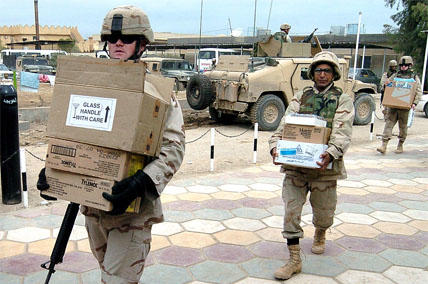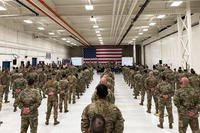Mobilization is the act of assembling Reserve forces for active duty in times of war or national emergency. Generally, the type and degree of emergency determine the level of mobilization. Regardless of level, recall procedures and phases of mobilization remain the same.
Selective Mobilization responds to natural disasters or civilian disturbances that do not threaten national security. Examples of a domestic emergency that might require a selective mobilization would be a postal strike, an earthquake, or other natural disaster.
Partial Mobilization occurs when the President mobilizes forces in response to external threats to national security for no longer than 24 months.
Full Mobilization occurs when Congress mobilizes all Reserve units in response to a declaration of war or national emergency. Mobilization can last for the duration of the emergency plus six months to meet the requirements of a war or other national emergency involving an external threat to the national security.
Total Mobilization occurs when the President and the Congress activate the entire Armed Forces, as well as all national resources to meet the requirements of war or other national emergencies involving an external threat to the national security.
Members of Reserve units are given the maximum time possible between the date alerted and the date required to report for active duty. Some units may be alerted but will not actually begin active duty for several weeks. However, under mobilization conditions, an emergency situation may require extremely short active duty notice.
Phases of Mobilization for Reservists:
1. Preparation: Reservists plan, train, and prepare for mobilization at their home unit. This phase takes place during normal peacetime.
2. Alert: A reserve unit receives notice of orders to active duty. The unit prepares for a transition from Reserve Component to Active Component status.
3. Mobilization at Home Station: The reserve unit assembles at home station and begins active duty.
4. Movement to Mobilization Stations: The reserve unit departs from its home station and travels to the mobilization site -- either in the U.S. or overseas.
5. Operation Readiness Improvement: The reserve unit makes final preparation before actual deployment at mobilization site.
Deployment is the next step for a servicemember after mobilization. Deployment is the asignment of military personnel to temporary, unaccompanied tours of duty. It is the actual sending of soldiers somewhere by some means. Like mobilization, deployment has 5 phases:
1. Predeployment Activities
2. Movement to Ports of Embarkation
3. Strategic Lift
4. Reception at Points of Debarkation
5. Onward Movement


















